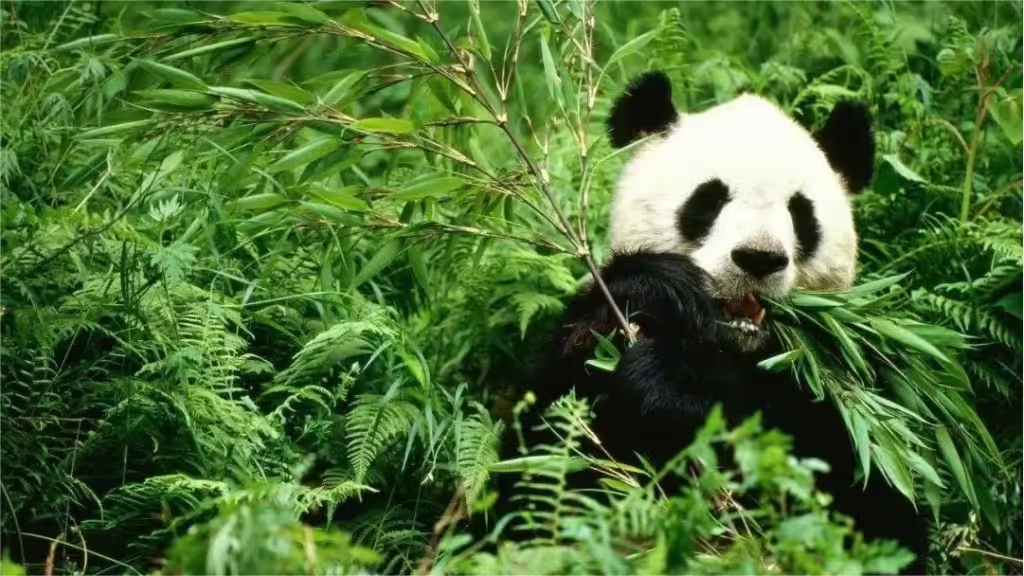The giant panda’s companion plants include Davidia involucrata (Dove Tree), alpine rhododendrons, and bamboo. These plants are not only closely related to the giant panda but also play a significant role in its habitat.
Davidia involucrata (Dove Tree)

Davidia involucrata, also known as the Dove Tree, is a relict species that dates back 60 million years, making it a “living fossil” of the plant world, much like the giant panda is a “living fossil” in the animal kingdom, having existed for 8 million years.
These two national treasures have not only a historical connection but also a geographical one. After the Quaternary glaciations, both the Dove Tree and the giant panda retreated to the southwestern mountain regions of China, where the high mountain valleys became their refuges.
Today, the Dove Tree is an essential component of the giant panda’s habitat and an important companion plant for these iconic animals.
Alpine Rhododendrons

Alpine rhododendrons are important plants in the giant panda’s habitat and coexist with pandas in their ecological environment.
Alpine rhododendrons refer to evergreen rhododendron species found at high and middle altitudes, including varieties such as the Minjiang Rhododendron, Adenostegia Rhododendron, Sichuan Rhododendron, Mianyang Rhododendron, and Dewdrop Rhododendron. During the rhododendron flowering season each year, the giant pandas enjoy eating bamboo and admiring the flowers as part of their delightful life.
Alpine rhododendrons have coexisted with giant pandas for millions of years. In the wild, they are commonly found in areas where giant pandas live, making them one of the most representative native rare plants in the giant panda’s habitat.
Since 2016, the Chengdu Research Base of Giant Panda Breeding has introduced and cultivated over 30 species of alpine rhododendrons in the Panda Valley, creating a picturesque landscape of rhododendron mountain flowers that mirrors the natural appearance of the giant panda’s original habitat.
Bamboo

In the vast world of flora and fauna, bamboo is the plant most closely associated with the giant panda. Bamboo serves as the primary food source for giant pandas and is also considered one of their companion plants.
Wild giant pandas inhabit high mountain forests where bamboo resources are abundant, and other food sources are relatively scarce. Over time, giant pandas have evolved to depend on bamboo as their main diet.
In the wild, giant pandas consume bamboo from 12 genera and over 60 species. In natural reserves, the bamboo species they consume mainly include highland and subalpine bamboo such as the Moss Bamboo, Coarse-flowered Arrow Bamboo, and Qingchuan Arrow Bamboo in the Minshan Mountain Range, and Bashan Bamboo, Qinling Arrow Bamboo in the Qinling Mountains, among others.
For captive giant pandas, the bamboo supply includes low and middle mountain bamboo species, considering factors such as the scale of bamboo availability, harvesting and transportation challenges, supply stability, and meeting the pandas’ nutritional and trace element needs.
The high fiber and low nutrient content of bamboo require giant pandas to eat constantly to meet their nutritional needs, which complements their leisurely lifestyle.




